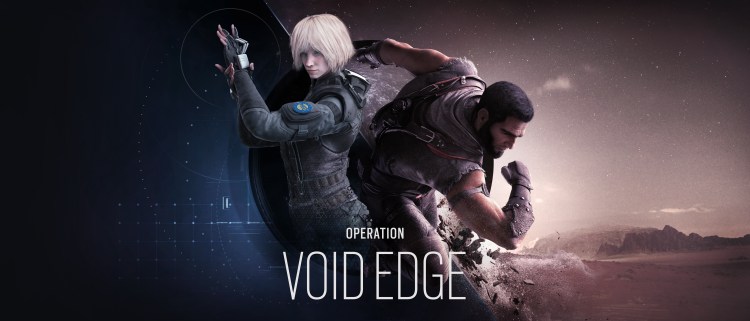Tell me if you’re familiar with this scenario: A publisher announces a game, and you really like what you’re seeing and hearing from the developers, so you vow to put it on your immediate play list.
Four years pass and you still haven’t touched it.
Unfortunately for me (or Ubisoft), I relegated Rainbow Six: Siege to the near-infinite void of the “play pile,” in 2015. Despite its name, few game discs escape this stack and their packaging to slip into a console and get played. This stack of games is a vertical imprisonment of fun, with its invisible walls and bars constructed by modern adulthood’s robbery of both free time and disposable income.
Rainbow Six Siege eventually escaped its fate when Ubisoft’s Rainbow Six: Siege invitational hit my radar: a week long e-sports hoopla pitting the best of the best at the game against each other. The PR email mentioning the event prompted me to remember that, “Oh, hey. Yeah! I once really wanted to play that game.”
So, before we talk about the new operators, let’s give me and the rest of us a bit of a refresher on Rainbow Six: Siege.
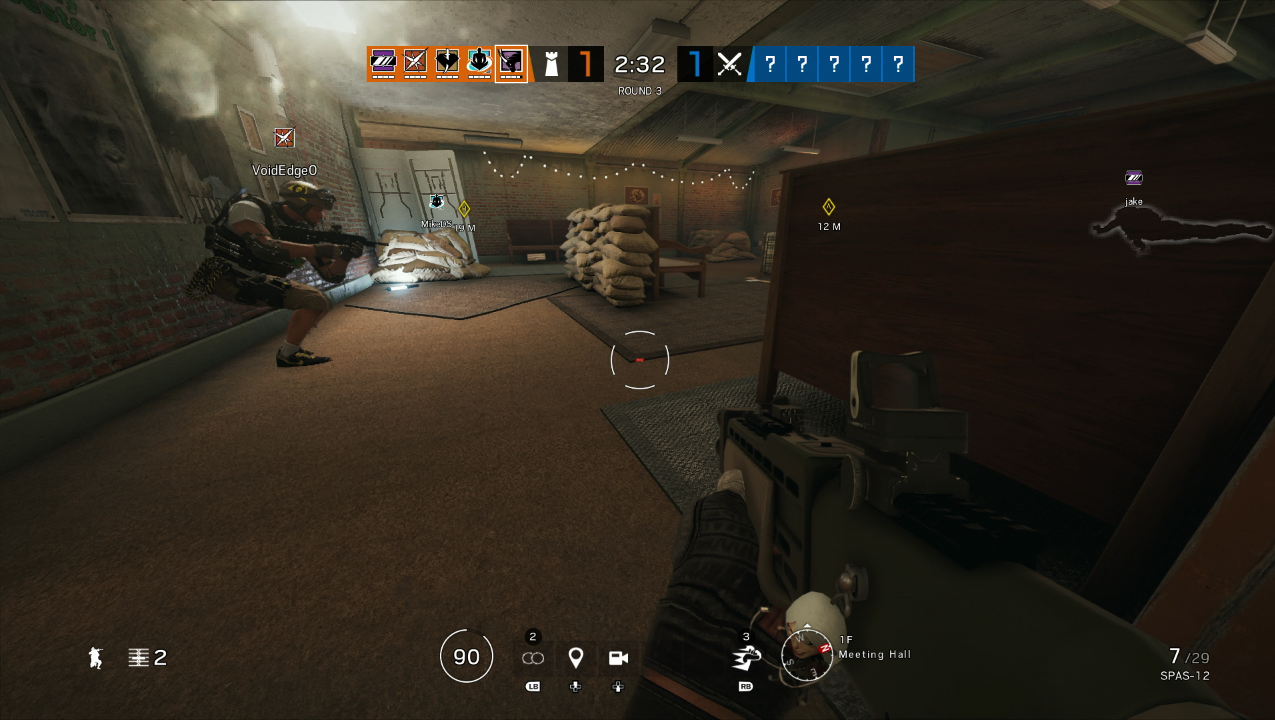
Above: We’re going to protect these bombs until they blow up. Wait. What are we doing?!?
Let’s get caught up on Rainbow Six: Siege
And play Rainbow Six: Siege I did! What I discovered was a fun tactical first-person shooter, with the obligatory and unabashedly Counter-Strike-influenced structure: a team of Offensive Operatives try to dispatch a team of Defensive Operatives, who are usually protecting one of two bomb sites.
The offensive team wins if it’s killed all the defensive players and/or have defused one of the two bombs. The defensive team wins if it’s killed all the offensive players and/or have enabled the bombs timer to run out (but is blowing yourself up really winning? Tactical shooters tend to take the “Yes” stance here).
Unlike Counter Strike and some other popular first-person shooters like Call of Duty or Apex Legends, Rainbow Six: Siege’s action is significantly less bonkers. Movement is toned down and reserved. Running just makes you a large, clumsy, and loud target. This is something you must avoid being in Rainbow Six Siege, because death is oh-so-harsh and gawd-damned-quick.
The vast majority of winning a fight in most first-person shooters comes down to who sees who first, and in something like Rainbow Six: Siege it becomes skewed even higher. Guns rarely require more than two or three quick bursts to kill an opposing player, and healing is an almost adorably naive idea, unless a teammate runs one of the very few healer characters in the roster.
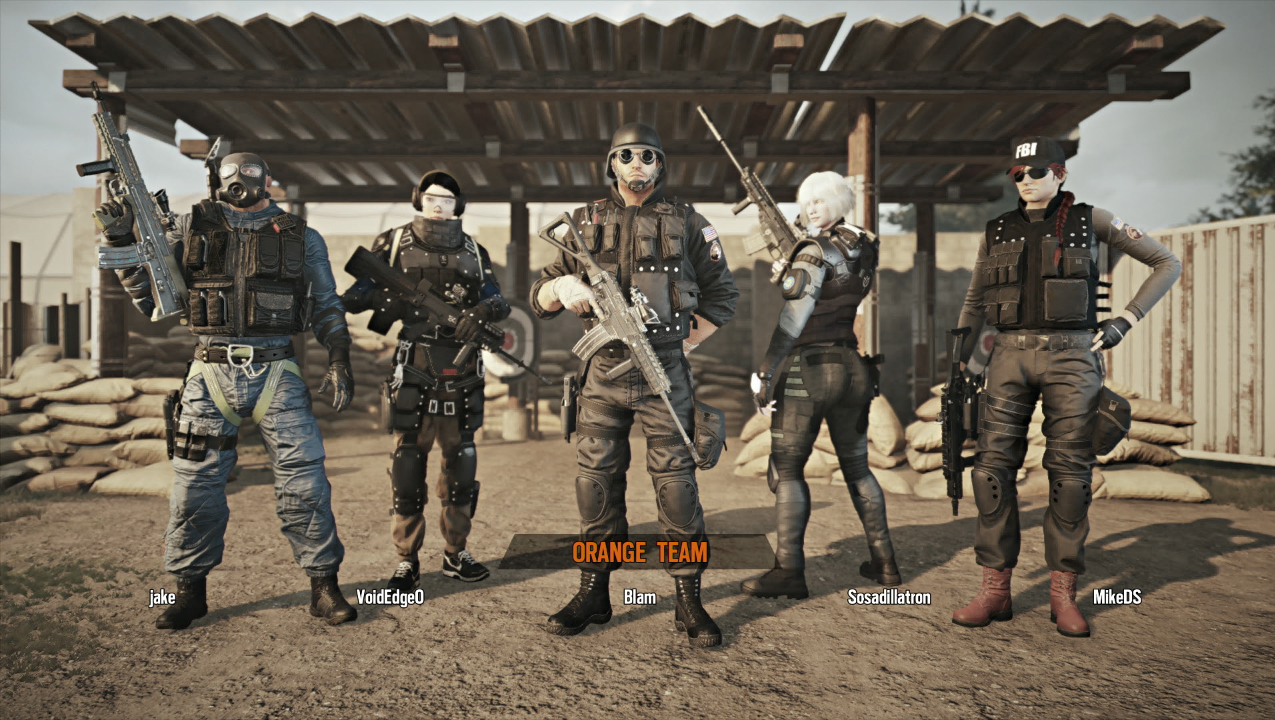
Above: Iana … seriously. The camera is in this direction.
The character roster is another distinct element to Rainbow Six Siege. For one, it’s large compared to other titles in the genre, closer resembling a fighting game.
With that large cast comes a stricter loadout. Every character has the choice of two primary weapons, maybe two types of explosives, and that’s it. The customization is thin, which is fine, because Ubisoft has obviously tuned these characters to specific playstyles.
Each character also comes with one special ability, which includes things like the aforementioned healing, special equipment that may hack certain electronic components, special weapons that have specific uses, or items that destroy enemy barriers and walls.
Barriers and obstacles are the other hallmark of Rainbow Six: Siege, and it’s one of the elements that peaked my interest at the game’s announcement. Play isn’t relegated to a static rat’s maze of invincible walls and ceilings. Drywall in Rainbow Six: Siege isn’t cosmetic, but a powdery block of material that can be easily punched through to create new lines of sight. Wooden floors beg to be abused and turned into vertical peep holes, enabling bullets to rain down on the enemy below.
Breaching a bomb site doesn’t necessarily require going through a door frame that meets city code regulations. Sometimes you have to create a new door by eradicating a wall, bad Feng Shui be damned.

Above: Let’s just board this up …
Great, you played the game. Good for you. But what’s new?
When the Rainbow Six: Siege Invitational PR hit my inbox, it also included a chance to go to Ubisoft and get some hands-on time with the two new characters being introduced to the game (a part of the Operation Void Edge campaign): Oryx and Iana.
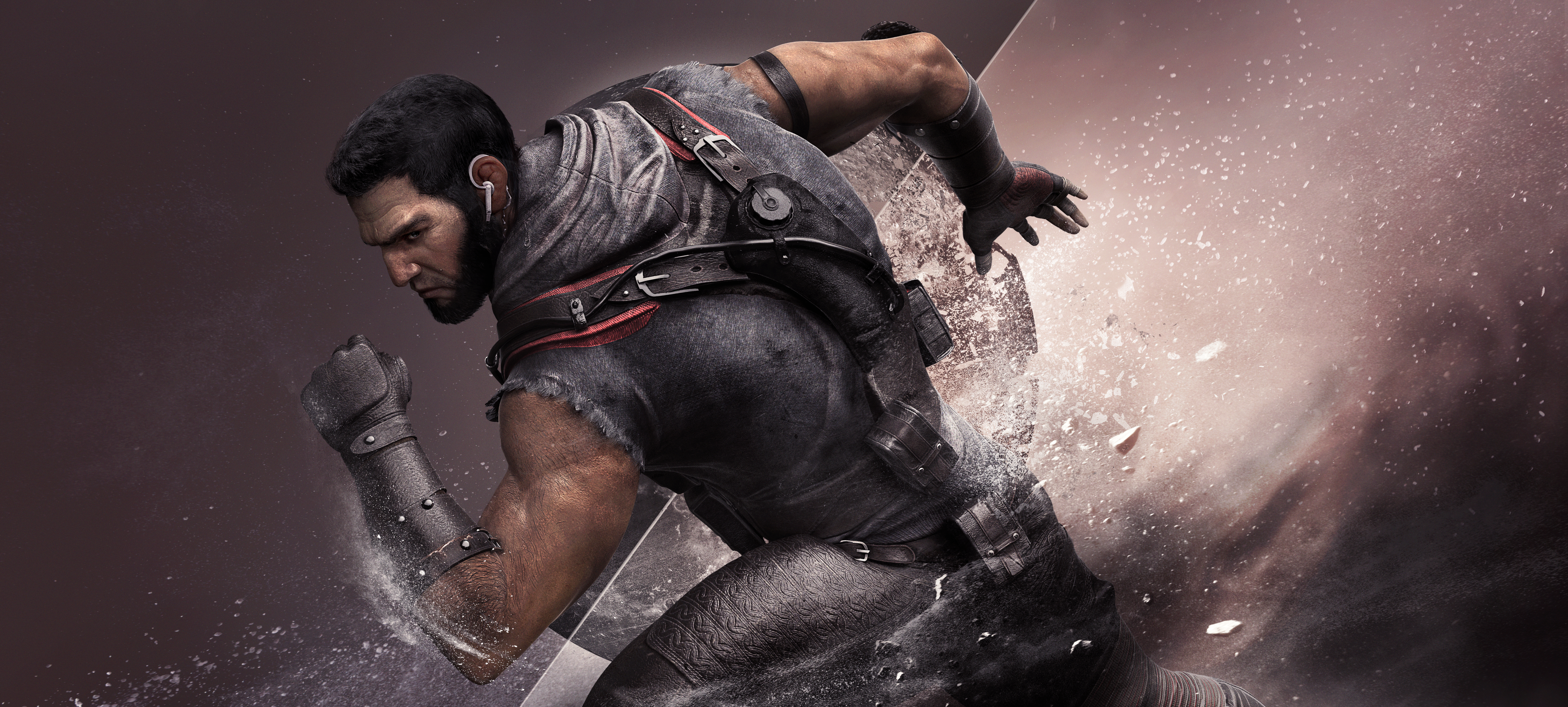
Above: 3 … 2 … 1 … and HEISMAN!
Oryx
At first glance folks may get the impression that Oryx is simply a defensive version of Sledge: an offensive operative that uses a tactical sledgehammer (surprise!). Both Oryx’s and Sledge’s special abilities have similarities: Both are designed to breach walls, hatches, and barricades quickly. But there are some significant key differences.
An obvious difference is that Oryx’s breaching ability, known as the Remah Dash, is much less subtle than Sledge’s hammer. The Remah Dash propels Oryx’s body forward, enabling him to violently burst through walls like the Juggernaut. In the right situation, Oryx is able to suddenly blow through a wall violently, like a cheap Halloween haunted house jump scare, and catch offensive operatives by surprise while creating chaos.
Although this seems to be the primary use for the Remah Dash, there were some immediately apparent drawbacks to that tactic. Smashing through obstacles drains Oryx’s health by about 10 points. On paper that doesn’t sound too bad, but as mentioned before, Rainbow Six: Siege is a highly lethal shooter, where health recovery is sparse, and conflicts end in seconds. Maybe there’s an argument to be made that the highly fatal nature of the game makes the 10 health point loss trivial? Even if that’s the case, the health cost for Hulk smashing hard surfaces is still something to keep in mind.

Above: Stop shooting me and let me ram you!
The other dangerous aspect to pulling a surprise party wall blast on a room of unsuspecting armed operatives is that it makes Oryx a frightening, yet highly exposed, target to panic fire at. So like all things Rainbow Six: Siege, tactical nuance is the way to go when Oryx decides to throw himself through a wall.
Let’s not paint a picture of Oryx’s Remah Dash not having utility outside of blindly smashing into barriers like a drunken frat bro. The Remah Dash also works like a melee attack to knock operatives on the floor and put them in a hit-stun recovery state. This allows Oryx a small window of time to pull an offensive combo of a Remah Dash knockdown, into gunning down the flopped-over opponent. Using the Remah Dash in this way can also be an effective counter to shield based characters.
Finally, Oryx is one of the few characters that can smash trap doors and then use them to climb upward between floors. Oryx also doesn’t have to commit to a full climb, but can grab the frame of the trap door and peek over the lip to see who is in the immediate area. Or get his head blown off. Whichever!

Above: Iana, please. The camera is over here. Would you please just face the camera?!?
Iana
Joining the offensive side of the Rainbow Six: Siege battlefield is Iana, an aerospace operative that specializes in deception and reconnaissance. Iana’s special ability, the Gemini Replicator, creates a holographic clone of herself. Seasoned Rainbow Six: Siege players are probably thinking, “OK. Well, great? I guess?” Rainbow Six: Siege already has a defensive operator named Alibi, who can also spawn several holographic clones of herself all over the map.
The difference with Iana’s Gemini Replicator is that you can control the holographic clone.
When Iana spawns her holographic clone, the player’s view switches to the hologram’s First-Person perspective. The hologram controls exactly the same as normal Iana, with a few caveats: Like Rimmer from Red Dwarf, Iana’s holographic form can’t physically interact with anything. This means the hologram can’t break barricades or attack the enemy. The hologram is also incredibly fragile. One shot or melee attack destroys the hologram.
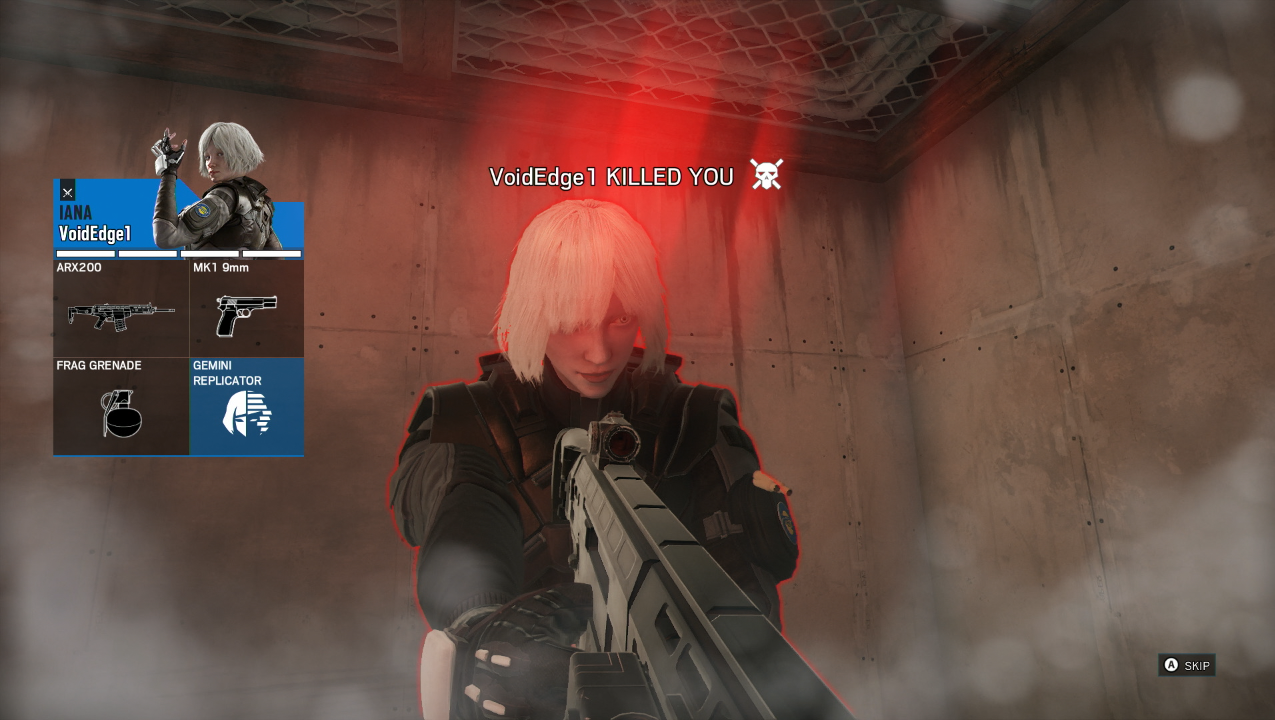
Above: Oh. So that was the real Iana.
The real Iana is also blind to her own surroundings while using hologram Iana. This means if the real Iana is discovered, she could be killed and never see it coming.
That hologram Iana can be indistinguishable from real Iana opened up a lot of really fun play possibilities. The most obvious use of the Gemini Replicator was running recon on a room or hallway that would otherwise be highly dangerous to lurk around. Even if hologram Iana draws enemy fire and is instantly destroyed, it has gained Iana’s team crucial strategic knowledge on enemy placement.
Iana’s hologram can also act as a decoy during an offensive push. On a few occasions during the hands-on session, we were successfully using Iana’s hologram to act as a false target, leading the charge into a fire fight and drawing the first few fatal shots away from friendly teammates.
One of the more advanced tactics, which I was the victim of multiple times, was using Iana’s hologram for deception. There were moments where I would spot an enemy Iana wandering around, and I had to question if what I spotted was a live Iana or a hologram Iana. If it’s a hologram, and it hasn’t seen me, maybe I should just let it go? Firing on it would give up my position.
But if it’s a real Iana, I just missed an opportunity to remove a significant member of the opposition.

Above: OMFG, I shot the hologram Iana again.
Yet again, if it’s the hologram, I could also be getting set-up to get flanked by the real Iana! In a game where winning moves are made with split-second decisions, having the wrong instinct can mean death. Especially if the Iana player is smart about matching their movement patterns and habits between both the real Iana and the hologram Iana.
For example, a ballsy and reckless real Iana may be able to pass as a hologram. Since players controlling hologram Iana may be more confident wandering around openly knowing that if they get shot, it’s just the hologram that dies.
This could work the other way as well, with a player using cautious movements with an Iana hologram, as if the real Iana is at stake, fooling players into thinking that’s the real Iana.
There’s a lot of potential play psychological tricks to experiment with here. It will be interesting to see how Iana’s hologram trickery will evolve.

Above: I don’t even know which Iana this is anymore.
Smaller stuff
The two new characters appearing in Operation Void Edge are really the meat of the Rainbow Six: Siege hands-on. There are some tweaks happening with the Oregon map, although since I just dove into Rainbow Six: Siege recently, I’m afraid I’m not sure what those changes specifically are (or their significance).
But that, in itself, is my takeaway. If there’s a time to finally pull Rainbow Six: Siege out of my “to play” void, it’s now. If you’re in a similar situation, these two new characters may make it worthwhile to dust it off and give the disc a spin.
